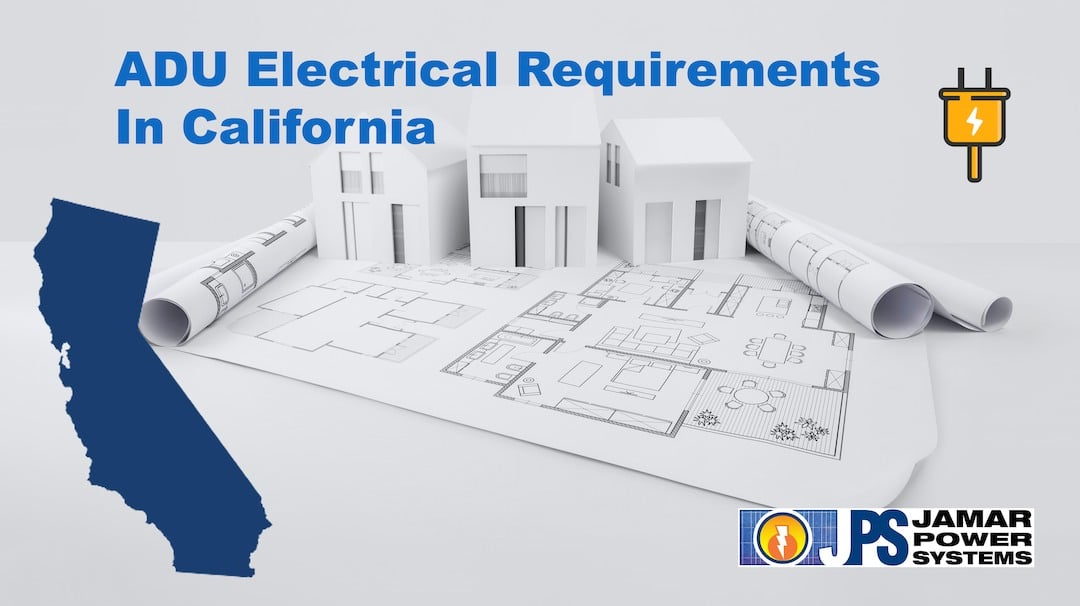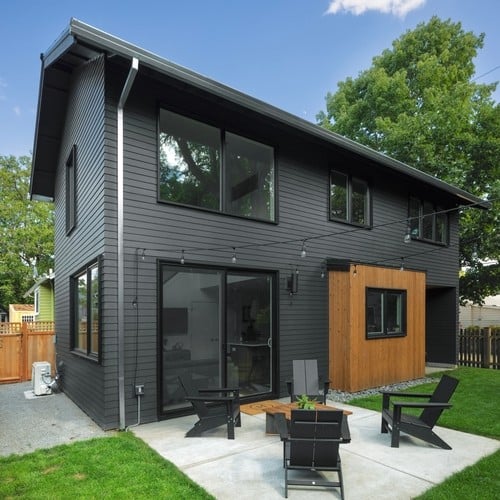Uncovering the ADU Electrical Requirements: What You Need to Know
To ensure safety, compliance with local and state regulations, and maximum energy efficiency in accessory dwelling units (ADUs), it is essential for property developers to be familiar with Title 24 standards as well as the electrical requirements of ADUs.
This guide outlines these demands, the utility connections involved, and strategies to maximize energy conservation while building an accessory dwelling unit(s).
Article Agenda
Understand local regulations and standards regarding ADU electrical requirements.
Obtain necessary permits and ensure compliance with all relevant regulations.
Employ qualified professionals to wire, install, and maintain electrical systems for safety & sustainability.
Understanding ADU Electrical Requirements
Accessory dwelling units (ADUs) – also called granny flats or secondary units – have become popular recently in response to housing shortages and for the potential of generating additional income.
These dwellings on the same property as a main house can be constructed separately from existing structures or out of preexisting spaces.
Understanding applicable regulations and standards concerning electrical requirements is critical for safe compliance regarding ADUs.
Depending on local jurisdiction specifications, permits must be obtained to guarantee safety and proper function within accessory dwellings.
What Is An ADU In Electrical Terms?
An ADU, or Accessory Dwelling Unit, in electrical terms, is a self-contained living unit designed and equipped with separate kitchen and bathroom facilities and located on the same lot as a single-family dwelling.
California’s Title 24 requirements stipulate that ADUs must comply with certain energy efficiency standards for lighting, heating, ventilation, and air conditioning systems.
What Is The New Law For ADUs In California?
As of January 1st, 2023, the California state government has changed its laws to make it easier for homeowners to construct Accessory Dwelling Units (ADUs) on their property. (more)
These new regulations allow two-story ADUs in certain situations and provide more flexible placement options.
The application process was also simplified, so obtaining permits is no longer as difficult or lengthy of a process.
All these changes are meant to open up opportunities for individuals wishing to extend their living space by building an accessory dwelling unit.
What is Title 24 & How Does It Apply to ADUs?
California’s Title 24 building codes outline minimum energy efficiency requirements for residential and non-residential buildings, including ADUs.
These codes address various aspects of construction, such as:
- lighting
- insulation
- heating
- ventilation
- air conditioning systems
The intentions are to reduce energy consumption, improve indoor air quality, and reduce greenhouse gas emissions.
Compliance with Title 24 is mandatory for all new construction and remodeling projects in California, including ADUs.
Working with a licensed contractor well-versed in California’s Title 24 building codes is crucial to ensure your ADU meets these standards.
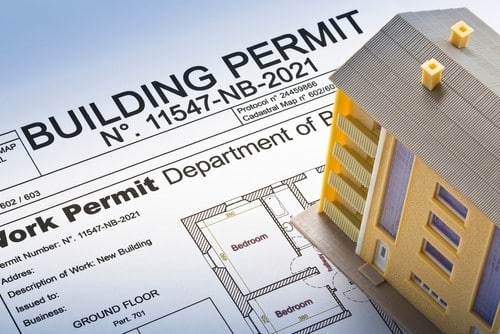
Permits & Regulations
Completing an ADU project necessitates obtaining certain building and electrical permits from the local authorities. Such paperwork outlines what is required in terms of power for a build to comply with state and local regulations.
All requirements will vary depending on region; thus, consulting your local permit office before beginning construction is vital for success.
It’s also important to pay attention to all details when filing the necessary documents. These specifications make sure that all standards set by the government are being followed accordingly during your ADU endeavor.
Wiring and Electrical Systems
The electrical system of your ADU is paramount for it to operate securely and reliably.
To this end, an independent electric panel with a minimum 100-amp capacity must be installed on the premises.
In San Diego County, California, the main home’s electrical service needs at least 225 amps in power supply capability.
Note that certain Counties may have different standards depending on local regulations.
All wiring fixtures should follow safety protocols during installation, including the suitable grounding of components, incorporation of proper breakers, and outlet use so that any potential risks are avoided while occupants remain secure.
Essential Electrical Components
For a secure and efficient ADU, certain electrical components need to be installed properly – like outlets, switches, circuit breakers, and light fixtures.
These items must be carefully set up in compliance with safety protocols under California Electrical Code to avoid any dangers due to electric shocks or malfunctioning wires.
Grounding all components accurately, using suitable wiring, and ensuring proper breaker boxes and sockets are used will ensure these security measures have been taken into account before you start living there.
Required Electrical Components (NEC Changes)
- Kitchen 240V outlets within six feet of the edge of the sink, such as range outlets, must be on a GFI CB.
- All outlets within six feet of a sink must be GFI protected, whether in a bedroom or hall.
- Garage 240V outlets, such as EV charger outlets, must be GFI protected.
- Laundry 240V outlets such as clothes dryers must be GFI protected.
- Basement outlets must be both AFI & GFI protected.
- Sump pumps must be GFI protected, AFI & GFI if in a basement.
- A surge protector is required at the main service or each subpanel if not possible at the main service.
- All switchgear must have a main disconnect (the six-handle rule is no longer allowed): no more tap boxes or multi-meter paks with no MCB.
Required Electrical Components (Title 24 Changes)
- Must include solar battery-ready provisions.
- 60A minimum breaker feeding the emergency subpanel.
- Empty one-inch conduit from the main panel to the emergency subpanel.
- Minimum of four circuits powered from the emergency subpanel:
- Refrigerator
- Entry lighting
- Sleeping room outlet
- Optional
The main panel must have a 225A bus space adjacent within three feet of the main panel for a future transfer switch box with a second one-inch conduit from the main panel to the j-box to the emergency panel.
Electric Ready Provisions
Two pole spaces are reserved for each breaker in the main panel and prewired for (if not permanent)”
- 30A Water heater
- 30A Furnace
- 50A Range
- 30A Dryer

Electrical Safety Guidelines
Abiding by electrical safety measures is essential when building your ADU to safeguard those living there and ensure compliance with local and state regulations.
The wiring must be appropriate, while groundings should apply for each element. Circuit breakers as well as outlets need suitable installations.
By following these protocols, you can simultaneously ensure both occupants’ protection and regulatory conformity.
What are the minimum amps for an ADU?
The minimum amps required for an ADU in California depend on various factors, including the unit size, the number of appliances it will have, and the electrical demand of those appliances.
Generally, a 100-amp electrical panel is sufficient for most ADUs. Still, larger units or units with high electrical demand may require a larger panel.
It is important to consult a licensed electrician to determine the appropriate electrical requirements for your specific ADU project and ensure compliance with California’s Title 24 energy efficiency standards.
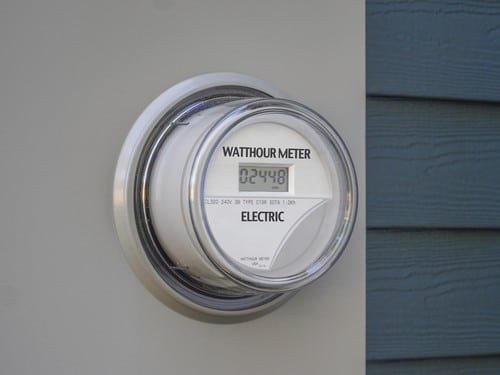
Separate Utility Meters
Obtaining a separate electrical meter for your ADU ensures accurate energy consumption tracking and makes the billing process more efficient.
In San Diego County, California, SDGE requires detached ADUs to be placed on a separate electric meter.
Additional gas and water meters might also be necessary depending on local laws and other details.
It’s important to contact both permit offices in your area as well as utility companies so you know what all the necessities are for setting up utilities with regards to your ADU. This will help identify the most cost-effective choice when dividing expenses between users.
Sub-Metering Options
If allowed in your jurisdiction, sub-metering can be a great way to measure and monitor energy usage in an ADU.
By setting up a sub-meter, you’ll have the ability to accurately calculate how much electricity is being used by your tenant each month, which then allows for more efficient rental fees.
The installation consists of creating a separate electrical service from the primary dwelling unit (PDU) that will run directly into your meter boxes to gauge their power consumption levels over time properly.
This method can provide better visibility of the energy used within their space while remaining cost-effective.
Energy Efficiency Standards
The safety and sustainability of Accessory Dwelling Units (ADUs) rely heavily on Title 24 energy efficiency standards.
Title 24 regulations apply to:
- lighting
- HVAC systems
- insulation specifications
- high-efficiency water heaters
- appliances
All newly built ADUs must pass the Indoor Air Quality test to meet these criteria for superior performance in terms of sustainability while also ensuring compliance with regulatory guidelines.
As a result, homeowners can rest assured that their accessory dwelling unit abides by environmental requirements and laws specified in Title 24 regarding meeting energy efficiency expectations.
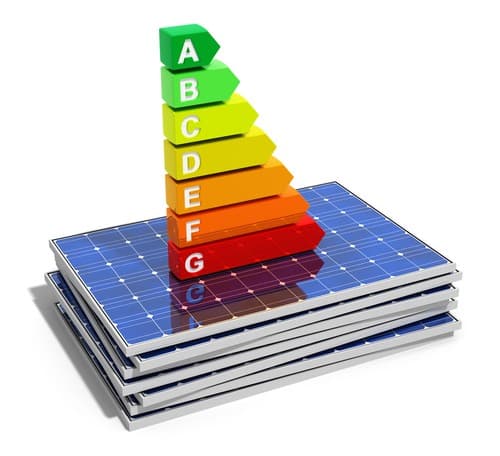
Meeting Title 24 Solar Compliance For ADUs
Title 24 compliance is imperative in constructing a sustainable ADU within California.
It requires that new builds include solar power as their renewable energy source. Yet, there are exemptions to this, like manufactured dwellings, garage transformations, and added units.
Although adhering to Title 24 standards may seem complicated, some simple methods can help you meet them, such as supplementing your existing home or even another array of panels with extra ones.
Combining additional photovoltaic panels, smart technology devices, insulation, and high-efficiency appliances, makes it possible to develop an efficient unit compliant with the requirements.
Solar Panel Requirements
Solar panels are essential to Title 24 compliance for newly constructed ADUs in California.
Certain cities or counties may have different standards concerning this matter than the state, so consulting with your local permit office is always recommended before engaging in any solar installation project onto both primary dwelling units or their respective units.
ADUs must also be “solar battery ready” with a minimum 60 Amp breaker feeding the emergency subpanel.
Solar Panel Exceptions to Title 24 Compliance
Knowing when Title 24 compliance exceptions apply to your ADU project is essential for developing an energy-efficient living space.
Certain types, such as attached units, garage conversions, and manufactured dwellings, are exempt from the solar panel requirement, allowing greater freedom in design choices while still adhering to efficiency standards.
It’s important that you know particular requirements regarding which solar options are best suited so as not to overlook other meaningful considerations related to this form of renewable energy implementation.
Strategies for Meeting Title 24 Standards
Meeting Title 24 standards can be achieved by combining various energy-saving strategies such as installing efficient appliances, utilizing insulation and window selection to increase efficiency, adding extra solar panels to your current system or primary house, and adopting smart home technologies.
Navigating Utility Connections for ADUs
Installing services like water, sewerage, and gas to an Accessory Dwelling Unit (ADU) can be costly and complex.
There are ways to reduce costs by installing separate meters or sub-meters and arranging for direct coordination with relevant utility companies.
Doing so means you should expect a smoother setup process at a reduced expense than otherwise incurred.
Coordinating with Utility Companies
When developing an ADU project, collaborating with utility companies is essential for installing electric, water, and gas services.
Working closely together makes it easier to ensure that separate electrical meters, circuit panels, and shut-offs are properly established.
By engaging utility providers early on in the process, potential issues can be minimized. It facilitates a successful outcome overall.
It’s also invaluable having access to their expert advice regarding best practices when creating connections – making sure all aspects of your ADU plan run as smoothly as possible.
ADU Electrical Components & Safety Guidelines
Ensuring the essential electrical components in your Accessory Dwelling Unit are properly implemented is integral to providing a safe and functional living space.
Following correct procedures during installation can help avoid potential risks to occupants and ensure everything functions accordingly.
We will look at what constitutes these crucial elements needed for ADU units before reviewing recommended guidelines that must be adhered to while installing them.
Keywords like ‘safety‘ and ‘installation‘ remain paramount throughout this process for maximal efficiency and protection against any hazards that could arise from incorrect procedures.
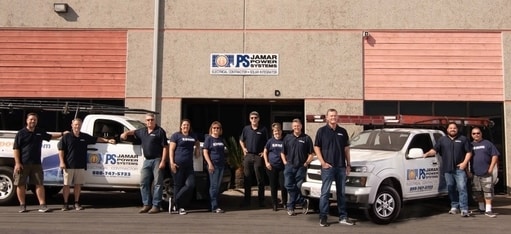
Hiring Qualified Professionals
Getting a qualified expert to work on the electrical components of your ADU is essential for its safety and legality.
These professionals must possess the skills needed to install these pieces safely and be well-versed in local/state ordinances.
Since 1984, we at Jamar Power Systems have worked with over one-hundred home builders on thousands of projects, large and small, in San Diego County, California. We have the skills and experience to make your ADU’s electrical systems a smooth reality.
Contact us today at (619) 448-7770 to discuss your project.
Maximizing Energy Efficiency In Your ADU
Creating an ADU that is energy efficient can save money over time on utilities.
- Several strategies to reach this goal include:
- Using appliances with high energy ratings.
- Correctly insulating the space.
- Fitting windows designed for efficiency.
- Incorporating smart home technology into the design.
To maximize those benefits, we will evaluate each of these tactics.
Every aspect of conserving energy should be considered, from selecting more effective tools for powering your ADU to using cutting-edge technologies.
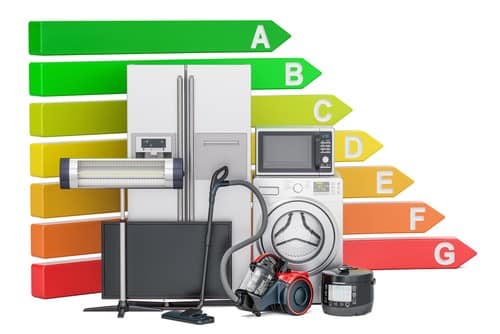
Energy Efficient Appliances
Utility bills can be decreased through the incorporation of energy-efficient appliances in ADUs.
Household gadgets with an Energy Star label, such as refrigerators, microwaves, ovens/stoves, and dishwashers, offer long-term savings by consuming less power than their non-energy efficient counterparts.
Compact versions like washer/dryer combos or mini fridges are perfect for this type of living space. They help provide cost efficiency at the same time.
Ventilation fans also fall into this category to maintain good air quality within your unit.
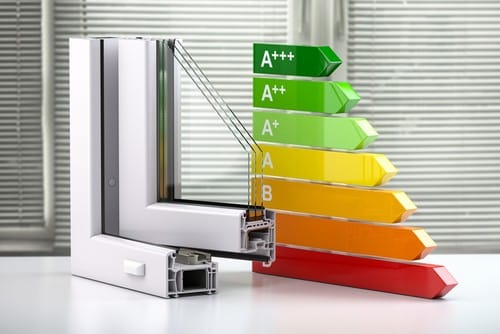
Insulation & Window Selection
Appropriate insulation and window selection are paramount when maximizing energy efficiency in your ADU.
The climate of the local area needs to be taken into account as well as choosing what type of insulation and windows will suit best.
The R-value for insulation and U-value for windows should also be calculated carefully when deciding how efficient your setup can become.
These features help keep interior temperatures steady while minimizing outside heat entering from the exterior through a suitable choice of glass panes.

Smart Home Technology
Smart home technology can be very beneficial for achieving energy efficiency in ADUs.
Smart thermostats, lighting, and appliances are examples that could not only bring convenience but also help reduce the consumption of electricity, thus leading to savings on monthly utility bills.
By including these features in your plans, you will have a comfortable living space with elements designed to maximize energy efficiency, such as automated temperature regulation or secure illumination systems.
Summary
ADU electrical requirements, Title 24 compliance, and energy efficiency must be accounted for to build a safe, effective, and efficient Accessory Dwelling Unit.
Following local guidelines and using sustainable techniques with professionals are the key elements in designing an ADU that meets building standards.
With this approach, you can create an efficient living space that contributes towards the state’s sustainability goals without compromising comfort or safety.
Sources & Resources
CA Energy Commission Compliance Manual
Schedule a FREE Planning & Zoning Appointment With The City of San Diego
Related Articles:
New Home Construction Electrical Costs
Solar Energy Systems for Home Builders
Electrical Services for New Home Builders
Electrical Requirements for ADUs in California
How Much Does It Cost To Build An ADU?
To speak with our experts, contact our office at (619) 448-7770 or fill out our web form here and we'll get in contact asap.
- How Solar Batteries Work - March 4, 2024
- Solar Battery or Generator for Emergency Backup Power? - January 30, 2024
- How to Check If Your Solar Panels Are Charging The Solar Battery - January 12, 2024

